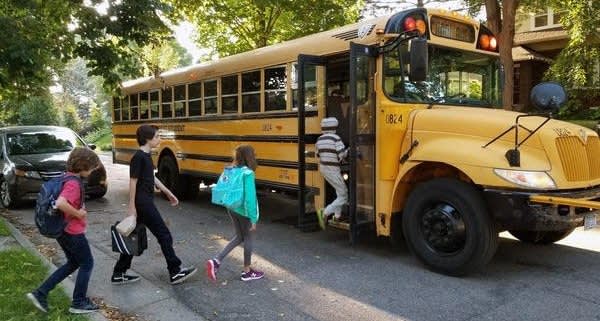
BACK TO SCHOOL: HOW TO AVOID SCHOOL BUS ACCIDENTS
Fall has arrived, and this is the time of year when millions of kids in Virginia and across the country go back to school. Students have various modes of transportation to get to school; many kids walk or ride their bikes if they live fairly close, while others will get rides from parents or grandparents. But the vast majority of students will ride the school bus.
About 25 million students throughout the United States take the bus to school. And while the bus is considered one of the safest ways to transport children, there are still dozens school bus accidents (across the country) that result in serious injuries and fatalities each year. As parents and motorists who share the roads with school buses, we need to do our part to keep our kids safe as they go to school each day.
Here are five helpful tips for avoiding school bus accidents:
Get your Kids to the Bus Stop Early
Whether your kids are younger and you walk them to the bus stop, or they are old enough to walk there on their own, make sure you get them to the bus stop in plenty of time before the bus arrives. Running to the bus stop at the last minute can expose kids to numerous dangers; such as tripping and falling, running in front of oncoming vehicles, and many others. A good rule of thumb is to have them arrive (at the bus stop) about five minutes ahead of schedule, so they can get settled and ready for their school day.
Be Sure your Children Board and Exit the Bus Safely
Once the kids are at the bus stop, they need to be very cautious while waiting for the bus to show up, and when they enter and exit the vehicle. While waiting, have them stand at least six steps away from the curb, and teach them that this wait time is not a time for horseplay with other kids. When the bus arrives, make sure your kids wait until it comes to a complete stop and the driver opens the door, before they start to board. While boarding, teach them to use the handrails so they are able to get on the bus safely.
Drive Slowly When Buses are Near
As a motorist, when you drive through school bus zones or get behind a bus, slow down and watch for kids walking to the bus stop or biking to school. School buses drive slowly and make frequent stops to pick up kids. They are also required to come to a complete stop at a railroad crossing. Move at a safe speed when you are behind a bus, give the bus plenty of space, and be mindful of the pedestrians and bicyclists that travel heavily through school zones.
Avoid Distractions
These days, we as motorists have more distractions than ever before. But the most dangerous of these distractions are the ones that are self-inflicted; in particular, texting and similar types of electronic activity on our smartphones. Texting while driving is never a good idea, and this is especially true when you are in a school bus zone. With the bus slowing down and stopping frequently and numerous kids around, drivers need to stay focused on what is happening on the road rather than on their phones. Whoever is texting you can wait for a response, and if the message is urgent, you can always pull over and stop before you respond to it.
Follow Virginia School Bus Laws
Finally, be sure to obey Virginia’s school bus laws. The Commonwealth imposes harsh penalties on those who fail to stop when passengers are boarding and exiting a school bus. Violations of these laws may constitute reckless driving, which is punishable with fines of up to $2500, a six-month driver’s license suspension, and even the potential for jail time. Motorists who are driving behind a school bus are required to stop when the bus raises its signal arm and remain stopped until the signal arm is lowered.
This requirement also applies to motorists who approach the bus from the other direction while driving on a two-lane road or multi-lane road with no barriers. If you are driving on in multi-lane road with unpaved space or a barrier in-between, you are not required to stop when a school bus going the opposite direction raises its arm, but you are asked to proceed with caution.
Injured in a School Bus Accident in Virginia? Speak with an Experienced Auto Accident Attorney
By following school bus safety best practices, we can all help ensure that our children are able to travel to and from school safely, so they can focus on learning. But even when we do everything right, accidents can still happen because of external factors, such as the negligence or recklessness of another driver. When this occurs and injuries happen to you or your child, you may be entitled to compensation.
If you or a loved one was injured in a school bus accident, get in touch with the seasoned personal injury attorneys at Schilling and Esposito today. We will meet with you to thoroughly assess your case and advise you of your legal rights and options. Call our office today at (804) 320-0950 or message us through our online contact form to schedule your free consultation.